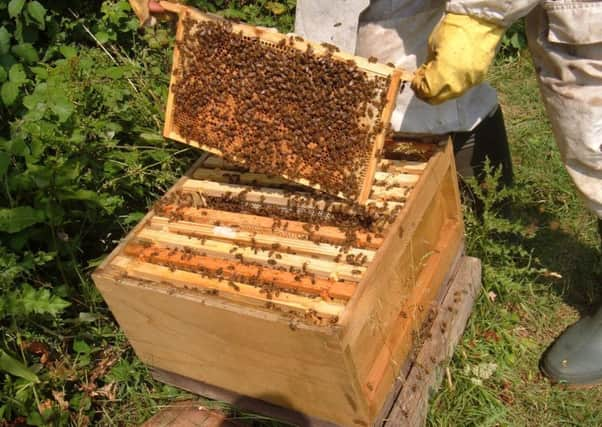Country Diary: Fragrant and magical scents of springtime


Her leafy locks wave in the breeze,
All freshly steep’d in morning dews.
Robert Burns
The magic of springtime spreads snowy-white blossom of blackthorn along hedgerows, and dense shrouds of pink over cherry trees. The sweet, mossy scent of primroses, so delicately fragrant, is enjoyed on banks beside many country lanes.
Their cultivated relatives, the primulas and polyanthus provide a riot of colour around many traffic islands. From earliest times primroses have been used for medicinal and sweetening properties. The candying of primroses and violets was popular in the 17th century, and nowadays crystalising is used to preserve these flowers for decorations of cakes, chocolate Easter eggs and attractive desserts.
Advertisement
Hide AdAdvertisement
Hide AdA walk towards Forge Valley between March and May reveals wood anemones or wind flowers – said to open only when the wind blows. The fragile, star-like flowers hang on slender stems, and being pliable, they yield to any buffeting received. Although pure white, one often finds them delicately flushed with pink. Possibly on account of this, the anemone was considered the emblem of sickness – certainly by the Egyptians. It was used by the Romans to charm away fever.
Visiting the village of Lythe, north of Sandsend, we found celandines, speedwell, daisies and stitchwort in bloom near the church. Beside the railed footpath, grew a plant usually associated with the sea – Alexanders, or Macedonian parsley, which I mentioned earlier. Scarborough’s Castle Hill has dense colonies, along with Whitby’s coastline too. Already bearing tiny yellow-green flowers and buds in dense, rounded heads, I nibbled some! Flower buds were used in salads during Medieval days, and even today the young leaves make a spicy addition to green salad, and impart a unique myrrh-like flavour to stews. The whole plant is edible, and it was most popular until celery replaced it.
The lower, paler stems are more palatable than greener parts. Cook in slightly salted water and eat them with butter, like asparagus, or mixed with white sauce.
Christine next door, has newts and frogs mating in her pond, and Michael’s honey bees have over-wintered well. He is seeking the queen, amongst 30,000 to 50,000 workers, to mark her with a special paint. Not an easy job.
Advertisement
Hide AdAdvertisement
Hide AdKittiwakes have returned from their over-winter fishing grounds, to nest on the narrow ledges of cliffs beside the Marine Drive.
We recently discovered a dead badger by the roadside near Forge Valley, possibly hit by a vehicle the previous night, alas.
Whilst driving from Sandsend to Dunsley, a pheasant was dicing with death as it tried to beat us to it. If we stopped – the pheasant stopped – then off again. We couldn’t get by! Eventually, wearying of the game, it scurried off the road and through a gap in the hedgerow to safety!